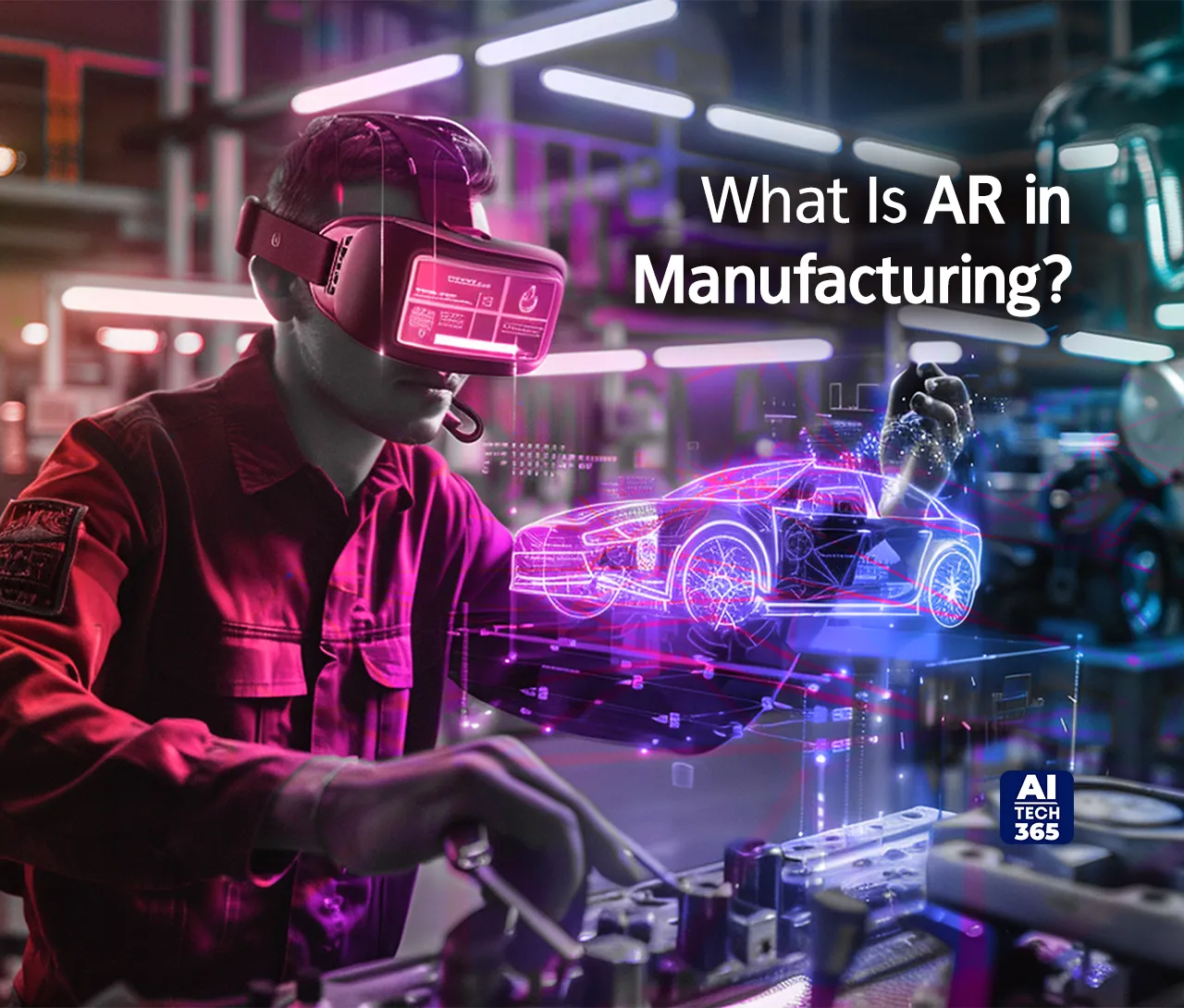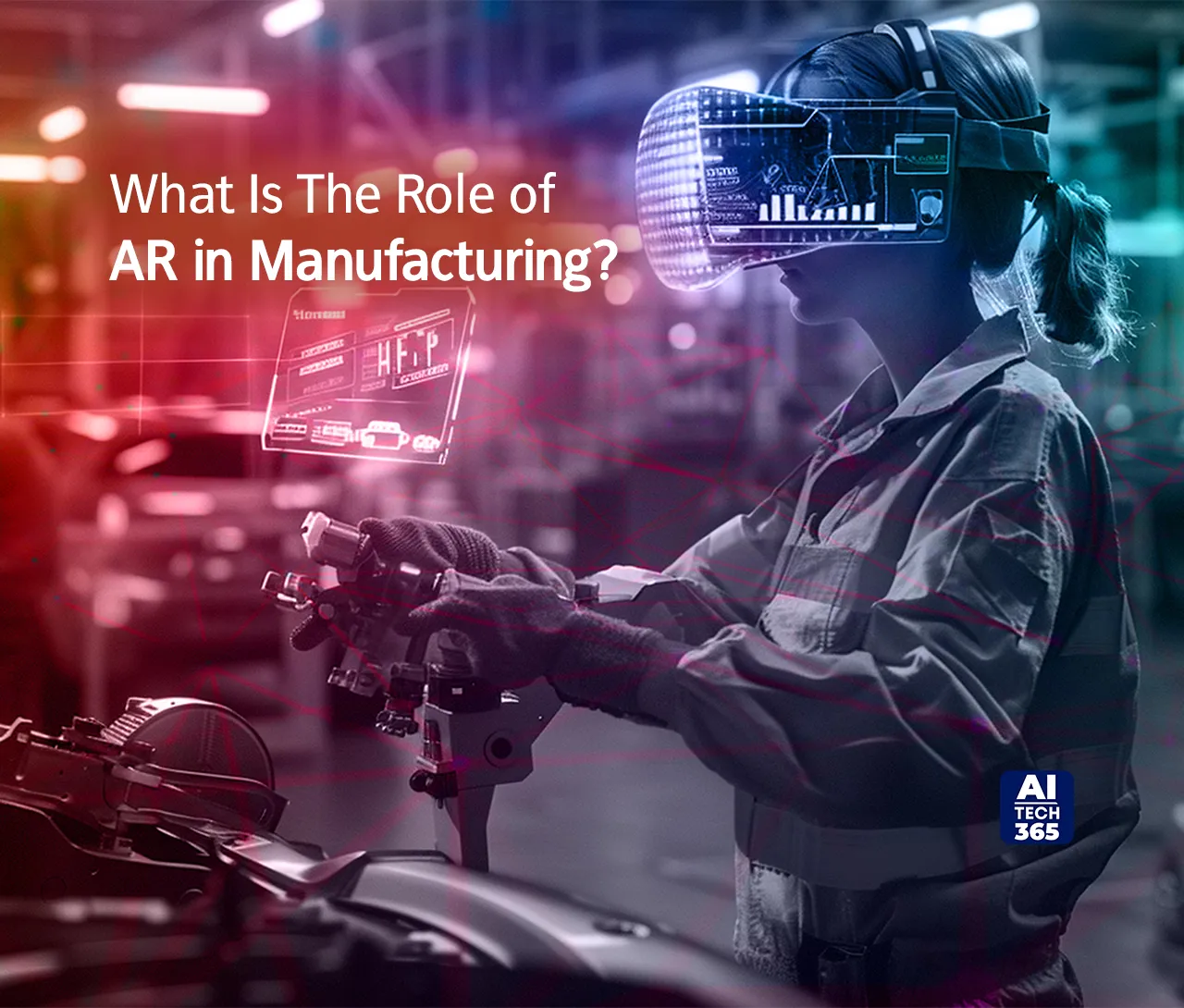Augmented Reality (AR) in manufacturing is gradually becoming a game-changer, transforming the way industries operate. What was once a futuristic concept is now being adopted across manufacturing plants worldwide, enhancing productivity, safety, and efficiency. An estimated 1.7 billion AR gadgets are currently in use. AR technology overlays digital information onto the physical world, providing real-time data and visual guidance to workers. The AR and virtual reality market is expected to value $40.4 billion in revenue by the end of 2024. This innovative approach is reshaping everything from assembly line processes to maintenance and training, making it an indispensable tool in the modern manufacturing landscape. Let’s delve deeper into how AR is revolutionizing manufacturing industries and why its adoption is rising.
What Is AR in Manufacturing?
AR in manufacturing describes the use of computer-generated audiovisual content to improve real-time human interaction with the physical environment. It enhances the manufacturing process by fusing digital and physical components.
Augmented reality improves production, efficiency, and safety in industrial processes by superimposing digital instructions, visual signals, and real-time information onto physical things. It makes it possible for employees to get direction, spot possible problems, expedite procedures, and make wise choices. AR in manufacturing has the power to completely change the sector by changing the way businesses run and increasing output all around.
What Is The Role of AR in Manufacturing?
Augmented reality is revolutionizing the manufacturing industry by offering a wide range of applications that enhance efficiency leading to improved product. It uses machine learning algorithms to enhance its functionality and capabilities AR technology combines digital and audiovisual elements to create an enhanced version of the real world, providing valuable insights and interactive experiences for manufacturers.
- Training and onboarding: AR applications allow new employees to familiarize themselves with complex production processes and equipment through interactive simulations and virtual representations. By using 3D models, holograms, and realistic simulations, new workers can better understand their environment, learn their roles and responsibilities, and identify potential safety hazards. AR systems can provide instant feedback on performance, guiding employees to complete tasks correctly and efficiently.
- Assembly and maintenance processes: By overlaying digital instructions and visual cues onto physical objects, AR guides workers through complex assembly procedures, reducing errors and improving efficiency. AR can also assist in maintenance and repair tasks by providing real-time guidance, highlighting components, and offering step-by-step instructions. This helps technicians identify and resolve issues quickly, reducing downtime and improving overall equipment effectiveness.
- Quality assurance: AR in supply chain management enhances quality assurance processes by enabling real-time inspections and comparisons. By overlaying digital information onto physical objects, AR systems can highlight defects, provide quality checkpoints, and ensure adherence to specifications. This helps manufacturers identify and address quality issues early in production, reducing waste and improving product quality.
- Logistics and supply chain management: By leveraging AR, manufacturers can optimize warehouse operations, streamline inventory management, and improve order fulfillment processes. AR can provide real-time information on inventory levels, product locations, and order details, enabling workers to navigate warehouses efficiently and accurately.
Also Read: AI in Content Personalization: The Future of Targeted Marketing
Benefits of AR in Manufacturing
- Improves Operational Efficiency: AR in manufacturing processes enhances efficiencies by providing step-by-step instructions for assembly tasks processes, machine setup, changeovers, and maintenance. Real-time visual directions minimize the time spent interpreting instructions, thereby boosting productivity.
- Accelerated Training: AR revolutionizes training processes by offering interactive and immersive experiences. It allows new employees to familiarize themselves with complex production processes and equipment through simulations and virtual representations, significantly reducing the learning curve.
- Enhanced Operator Efficiency and Safety: AR overlays digital instructions and visual cues onto physical objects, guiding workers through assembly and maintenance tasks. This reduces errors, improves efficiency, and enhances overall worker safety.
- Cost Reduction: AR technology helps reduce costs in the manufacturing industry by enabling real-time inspections, highlighting defects, and ensuring adherence to specifications, which reduces waste and rework. Additionally, AR streamlines logistics and supply chain management processes, improving accuracy and efficiency.
- Improved Product Development: AR facilitates rapid visualization and collaboration in product design. Designers can visualize and manipulate 3D models in real-time, accelerating time-to-market and enabling faster iterations in the design process.
- Increased Throughput: AR enhances the entire manufacturing process, from improving throughput to reducing production downtime. It helps identify issues on the shop floor, streamlines processes and optimizes operations.
- Scalability and Adaptability: AR-powered tools and equipment used throughout the product lifecycle offer scalability and adaptability. AR applications can be customized to suit specific manufacturing needs, making them versatile and flexible.
- Immersive Learning: AR applications provide immersive training experiences, allowing on-the-job training with a greater degree of freedom. This contributes to more effective learning and reduces the fear of making mistakes.
How is Augmented Reality Transforming Manufacturing?
Augmented reality is being widely used in manufacturing in a variety of innovative and impactful ways. Businesses are leveraging AR-powered apps to provide step-by-step guides, documentation, and manuals that help train new workers and upskill existing teams. This hands-on training in digital environments can support or even replace human trainers, enhancing workplace safety. With AR, information is easily accessible from anywhere in the world at any time, thanks to 3D models, detailed instructions, and opportunities for collaboration.
Imagine creating a digital twin of your factory floor so workers can perform maintenance more efficiently and remotely, optimizing production lines. Digital twins can also be used to create mock-ups that demonstrate how a finished product will work, incorporate customer requests into designs, and manage predictive maintenance. Industry 5.0 integration with digital twin technology, where the digital twin acts as a clone of the physical object paired with IoT, makes this possible.
Final Words
AR in manufacturing sector will surely transform the future. With its ability to seamlessly merge the digital and physical worlds, augmented reality (AR) will become a vital tool for improving efficiency, productivity, and safety. While assembly and maintenance operations will be directed by real-time instructions, reducing errors and downtime, new hires will quickly become accustomed to complicated procedures thanks to AR-enabled training and onboarding.
AR’s real-time inspections will help quality assurance procedures by reducing waste and faults. Streamlining processes and increasing accuracy will be achieved through supply chain management and logistics optimization. With AR’s capacity to perceive and modify 3D models, design and development will progress, speeding up innovation and time-to-market. As AR becomes a crucial component of manufacturing, the sector will see previously unheard-of levels of productivity, efficiency, and operational excellence.
Also Read: AI Assistants on the Factory Floor: Revolutionizing Manufacturing Operations
Also Read: AI in Product Development: Accelerating Innovation in B2B Markets
Also Read: The Hidden ROI of Industrial Machine Vision: Beyond Defect Detection
Also Read: How Generative AI in Manufacturing is Reshaping Production: Use Cases Explored
Also Read: Revolutionizing Industry: The Power of AI in Predictive Maintenance Software
Also Read: How is AI in Supply Chain Management Transforming Logistics in 2024?


